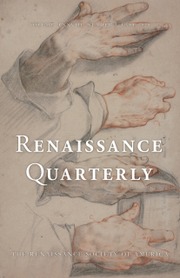In December 2019, the University of Helsinki’s Centre of Excellence in Reason and Religious Recognition hosted an international conference entitled Encountering Others, Understanding Ourselves in Medieval and Early Modern Thought. This volume compiles revised versions of papers presented on that occasion. Compared to the conference, which saw a greater focus on an extended early modern period, this volume primarily centers on the Middle Ages, with the exception of three contributions (those by Päivi Räisänen-Schröder, Jukka Ruokanen, and Emanuele Lacca). Räisänen-Schröder focuses on Lutheran authorities in Württemberg who managed Anabaptist communities; Ruokanen examines the limitations of religious toleration in Johannes Althusius (1557–1618), who reduced it to a matter of political prudence, provided that the beacon of true religion was preserved; and Lacca offers insights into Dominican Pedro de Ledesma’s (1544–1616) doctrine of justice in his Suma Moral (1598).
With only one further exception (explained further below), the remainder of the volume presents an articulated, symphonic, and interdisciplinary exploration of medieval history, thought, and mentalities regarding the construction of collective identities, particularly those marked by religious belief. In their thorough introduction, editors Nicolas Faucher and Virpi Mäkinen commendably unify the diverse range of topics and approaches under two overarching purposes: first, highlighting the significance of understanding ourselves when encountering others; and, second, exploring medieval and early modern ideas of toleration (and their limitations).
In medieval times, emerging identities were often forged through defining religious orthodoxy—a long-term, not necessarily consistent process anchored in the othering of social groups that emerged as different over time. The process of othering was ambiguous and multifaceted. The essays, grouped by the editors into three parts, aim to map examples of these ambiguous meanings. One possibility is repulsion and conflict (part 1, “Evil”); another is the blurred boundaries of mutual understanding (part 2, “Toleration”); and a third is embrace and inclusion (part 3, “Altruism”).
The othering of the Waldensians opens part 1, with a comprehensive essay by Reima Välimäki, who employs the concept of lived religion to examine church hierarchy concerns about the social and moral models Waldensians could project of their personae within communities. Michael Dunne’s fascinating essay focuses on Richard FitzRalph’s (1300–60) evolving thought on understanding other faiths, an understanding where ultimately, though, “the other remains other” (53).
A merit of this volume is its inclusion of perspectives beyond the Western Catholic (or Protestant) tradition. Marienza Benedetto offers a perspective on medieval Jewish thought by accurately discussing Maimonides’s (1138–1204) controversial metaphors in the context of the modern concept of racism. Serafim Seppälä’s intriguing essay explores Eastern Christian self-understanding, focusing on Theodore Abu Qurrah (b. ca. 750), an Orthodox saint and a patristic author who lived in the Abbasid period and wrote in Arabic. Maria Joana Gomes investigates how medieval translations of Arabic terminology reveal multicultural interactions in the Iberian Peninsula.
Major figures such as Thomas Aquinas (ca. 1225–74) and Nicholas of Cusa (1401–64) are central to the volume, with articles by Nicolas Faucher and Isabelle Mandrella on Aquinas’s theory of knowledge and ethics. Faucher analyzes the development of a theory of moral introspection from Aquinas through Peter John Olivi (1248–98), contrasting it with Duns Scotus (1265/66–1308)’s conclusions. Mandrella emphasizes Aquinas’s ethics, which, despite his awareness of human social nature, remains individualistic and particularistic. Susan Gottlöber concludes the philosophical contributions with an analysis of Cusa’s theory of individuation and diversity in human customs.
Virpi Mäkinen and Ritva Palmén contribute insights into potential medieval altruism, blending social history and theology. Mäkinen examines the definition of poverty and the profiling of the poor, contextualized within the theological-political concept of charity. Unlike the Renaissance approach (e.g., Juan Luis Vives’s [1493–1540] De Subventione Pauperum), medieval aid to the poor remained within soteriological and locally limited boundaries. Palmén explores the theological virtue of hope, examining its social-emotional dimension and its development by major theologians in the Middle Ages.
This volume offers a comprehensive panorama of medieval (and early modern) forms of othering and social self-understanding, revealing numerous potential research directions and further developments, which one can only hope will result in further volumes. One key epistemic premise is the overlapping and mutual interaction between past and present: exploring medieval othering practices can illuminate contemporary othering traits, while crafting historical images (and even caricatures of the past) often reflects current othering attitudes, especially in the realm of politics. Figures from the recent past (or present) who do not commonly appear in historiographical papers about the medieval or early modern period emerge throughout the volume—such as recent popes, philosophers, psychologists, and even politicians such as Nicolas Sarkozy and Vladimir Putin—highlighting the intertwining of historical and contemporary perspectives. Jukka Korpela’s contribution on medieval Russian images and their role in current Russian politics underscores the volume’s interdisciplinary nature and the overlapping interactions between historical epochs.


